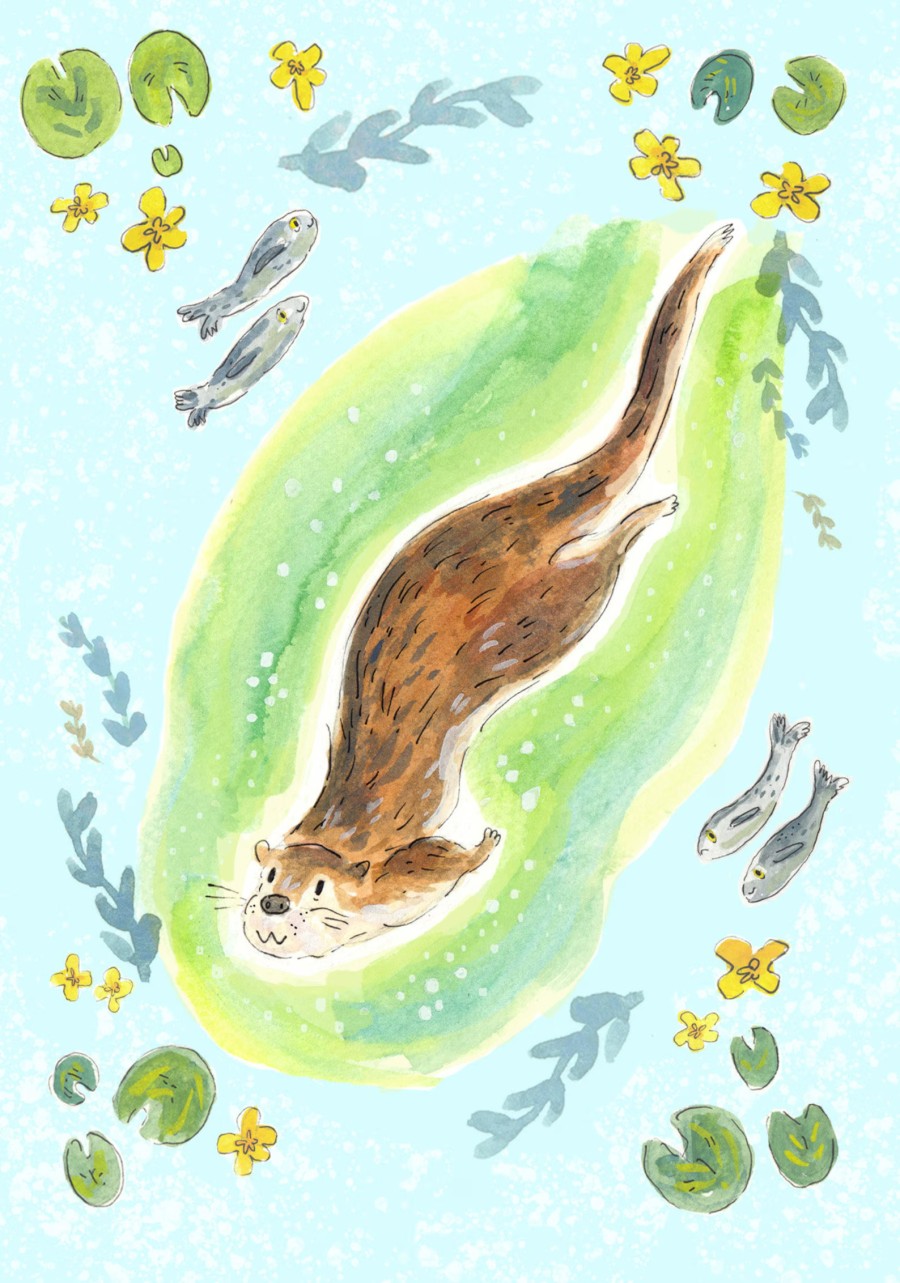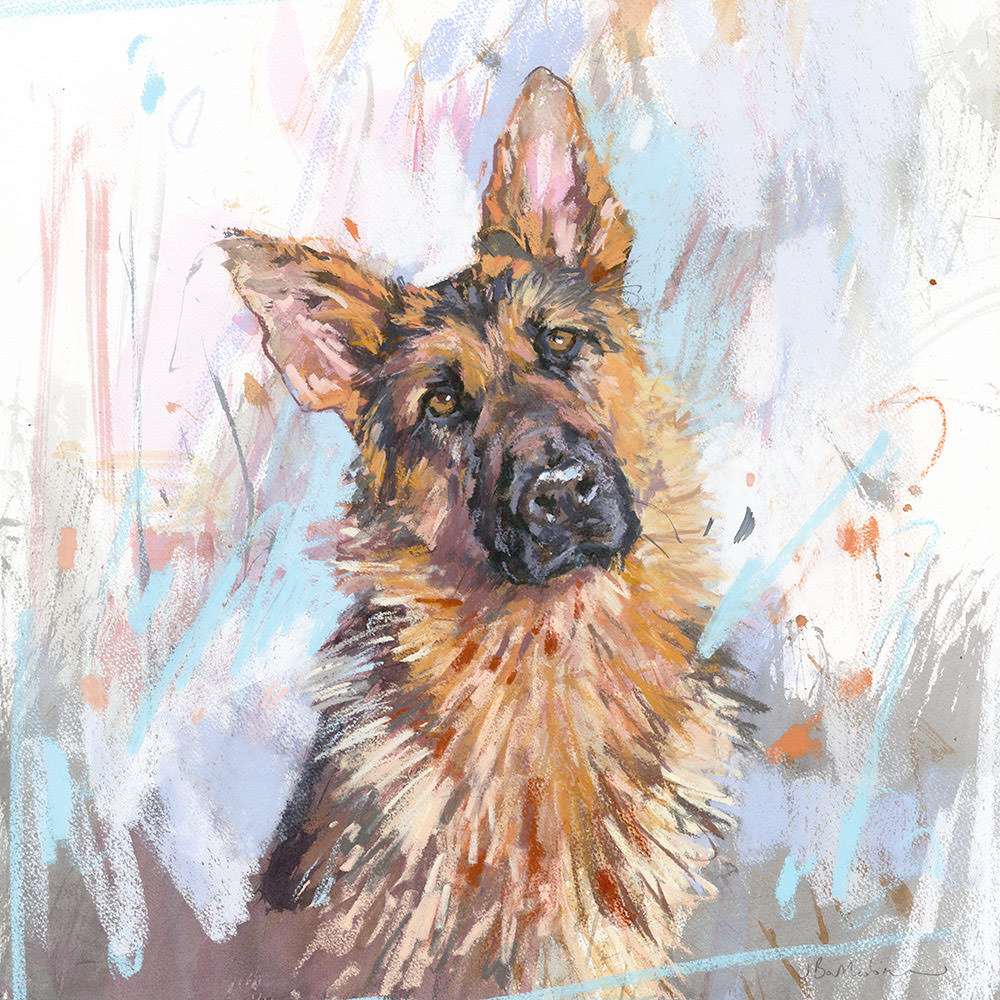
Otters are one of the most fun-loving creatures in England. They live to play, then hold hands while sleeping, so they don’t float away from each other! Otters eat around a quarter of their body weight each day, and use their big paws to find food (eating off their tummies!), and of course they often compete with anglers and commercial fisheries for food, as fish (and clams) form most of their diet (along with waterbirds, amphibians and crustaceans).
If you’re a fan of TV wildlife cameraman Charlie Hamilton-Jones, you’ll likely know that he loves otters! He says he could just watch them all day – swimming, eating, playing and sleeping. It’s quite difficult to spot otters as they are fairly solitary (apart from when coming together to mate). But what’s really sweet is that the parents often have to coax baby otters into the water, as they are too frightened to swim. Of course once they get the bug, you can’t keep them out of the water. View his online photographic gallery of otters.
Thankfully otters are no longer hunted, though they are still at risk from habitat loss, road accidents. They keep warm due to the thickest fur of any species, and have eyes high on their head, to see what’s going on, while in the water. Fantastic swimmers due to webbed feet, otters use their whiskers and claws to catch food.
Sea otters are native to North America, found in the North Pacific. They also have very thick fur and are bigger and more powerful than our otters, having skin pouches under their paws to store food. They love purple sea urchins so much, that sometimes their bones turn purple (like our pee turning pink, when we eat too much beetroot!)
how we can help our otter friends
Live simple sustainable lives and help make roads safer for wildlife through better town planning and driving less. But overall, otters are a real conservation success, with the species (which almost became extinct in the 50s due to hunting and chemicals) is now protected by law, so things look hopeful for playful otters!
You can report any concerns to The Wild Otter Trust (don’t touch baby otters as mothers often leave them for several hours, just continue to monitor and call for help). They have nationwide volunteers who can visit in to rescue, rehabilitate and return to the wild. If you have to handle an injured otter, place in a box with a blanket/towel to lay on (and hide) and keep dogs and other animals away. Keep the otter in a dark quiet place (not near radiators or anywhere too hot or cold). You can also use the site to report dead otters.
The Wild Otter Trust reports that nearly all cases of fisheries having issues with otters taking fish is due to poor maintenance of fencing construction, and they can help with advice and brand recommendations. Investing in proper fencing and maintaining it is good for fisheries and also safer for all wildlife. The trust does not charge for their advice service.
books to learn more about otters
Otters (encounters in the wild) is a book by Scotland’s renowned nature writer, who with passion and vision, relives memorable encounters with one of our best-loved creatures, offering intimate insights into their extraordinary lives. Otters are playful river-loving carnivorous mammals who love to hold hands with each other so they don’t float away, and live to play!
There is a new pattern on the sea, just offshore. At the head of it is the blunt thrust of an otter muzzle, from which a vee-shaped wedge spills quietly. A big dog otter frequents this shore. I have seen him often. A ginger muffler about hsi neck, and jowls temper his sleek and powerful profile. But then any adult is a captivating cocktail. I don’t know if this is the same animal; I can’t tell in this light. But he is fishing, and he may be coming my way. Then he vanishes.
The Secret Life of the Otter is by Scottish writer Andy Howard, who also is a gifted photographer. In this book, he opens their lives to us with a perfect combination of words and images: how they hunt, the beauty of their movement, fierce battles over territory and how they raise their young. Also learn about the secret life of sea otters living off the California coast.
Find Out About Animal Tools is a wonderful book to educate young children on how animals use clever tools to lead their lives. With beautiful whimsical illustrations, the book shows just how inventive the animal kingdom is, and includes an end note of more fascinating details for curious readers. Learn about how:
- Otters break open shells on their chests
- Crows make hooks, to snare grubs
- Tailorbirds thread plants to sew ‘cup nests’ for chicks
- Crocodiles hide under sticks, watching their prey
- Egyptian vultures drop pebbles on ostrich eggs, to open them
- Male palm cockatoos break twigs to ‘drum’ on nests, to impress!
- Archerfish spit jets of water, to knock down prey
- Burrowing owls decorate doors with dung, to attract beetles
- Chimpanzees wield grass stems, to fish out termites
Martin Jenkins was born in Surrey, and grew up in Kent, Ireland and Spain, before studying conservation biology at Cambridge University. He’s studied orchids in Germany, timber in Kenya and the chameleon trade in Madagascar, and now writes books to educate children on conservation issues.






